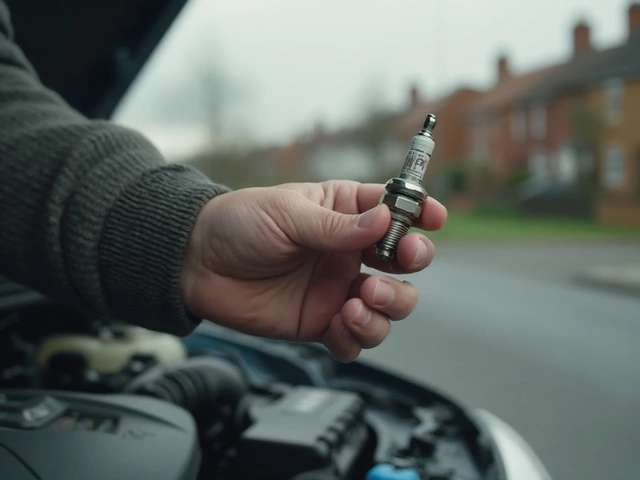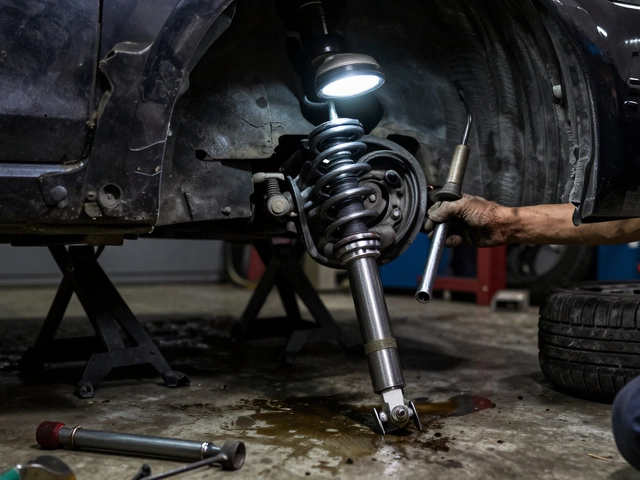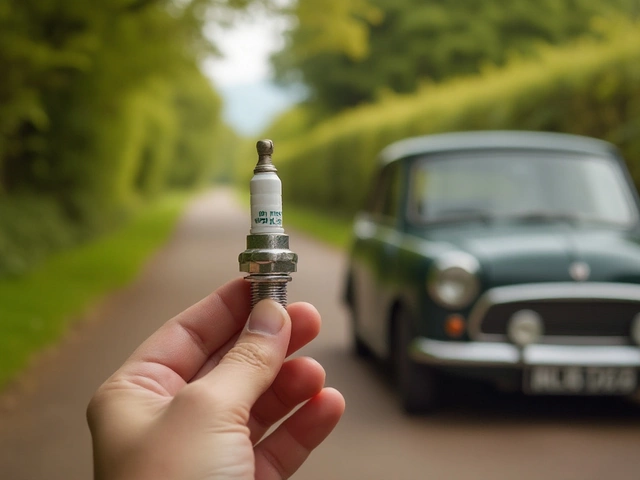So you've got a car problem, and someone suggests resetting the battery. Seems like a low-cost, do-it-yourself solution, right? But if you're dealing with a wonky fuel pump, is this the silver bullet you’re looking for? Well, not exactly.
First off, the fuel pump is a crucial component that sits in your car's fuel tank and supplies fuel to the engine. It's not usually on speaking terms with the battery reset procedure. Resetting your battery may clear some error codes, reset electronic systems, and sometimes even help your engine run smoother. But when it comes to a faulty fuel pump, the problem is usually more mechanical than electronic.
Now, before you pop the hood and start fiddling with the battery, it's worth understanding what each part of your car’s electronic system does. A battery reset can temporarily mask issues with sensors but won't fix mechanical failures. If your car sputters or stalls because of the fuel pump, simply cutting power to it might not solve your issue. But hey, don't give up hope just yet!
- Understanding the Fuel Pump
- What Happens When You Reset the Battery
- Electronics and the Fuel Pump: The Connection
- Common Reasons for Fuel Pump Failure
- Practical Tips for Diagnosing Fuel Issues
- When to Consult a Professional
Understanding the Fuel Pump
The fuel pump might not be the star of the show in your car's operation, but it plays a key supporting role. It's the unsung hero ensuring the engine gets a steady supply of fuel, making sure everything runs smoothly. Without it, your car's not going anywhere—literally.
This device is usually tucked away in the fuel tank, where it can push the gasoline or diesel right to the engine. Imagine it's like the heart in your circulatory system. It's responsible for creating the right amount of pressure to move the fuel through a series of lines, keeping the engine humming happily.
Another cool task it handles is controlling the fuel pressure. Consistent pressure is vital for the engine to perform efficiently and keep emissions in check. Modern vehicles often rely on electric pumps that get commands from the car's engine control unit (ECU), which means there’s a bit of a tech element in there too.
Normally, when you turn on your car, the fuel pump comes to life, briefly buzzing to signal it’s working. If you don't hear this buzz or your car struggles to start, it’s a red flag that maybe not all is well in fuel pump land.
Some common signs of a failing fuel pump include sputtering engines, power loss, or a complete engine stall. It's like when you've had a long day, and you're running out of steam—except this is a mechanical fatigue.
| Common Symptoms | Possible Causes |
|---|---|
| Engine Sputtering | Fuel pump failing to deliver steady pressure |
| Power Loss | Weak pump unable to keep up with engine demands |
| Car Won't Start | Complete pump failure |
The price tag on these little guys can vary, but repairing or replacing a fuel pump isn't always cheap. That's why catching these signs early can save you a good chunk of change. Important to note too—they don't usually give up without warning, so being tuned into these signals can prevent headaches down the road.
Knowing how your car battery and fuel pump interact can help, but remember, if there's a mechanical issue with the pump itself, fiddling with the battery won't solve it. Consider consulting with a professional for diagnostics to extend the life of your fuel pump and keep your ride smooth.
What Happens When You Reset the Battery
Ever unplugged something to fix it? Resetting the car battery is kind of like that. You're essentially rebooting your car's electronic systems by cutting off its power supply. When you disconnect the battery and then reconnect it, your car's On-Board Diagnostics (OBD) and various electronic systems get a fresh start.
The most immediate effect is that any warning lights on your dashboard might disappear. That annoying check engine light flickering on and off? Resetting might clear it. But remember, it's not just about turning off the lights; you're wiping the memory of any error codes stored in your car's computer. Think of it like clearing your browser's cookies.
"A battery reset is like a soft reboot for your car's tech systems," says John Hancher, an automotive tech expert at CarHQ Magazine. "It can solve electronic hiccups, but it's no cure-all, especially not for mechanical issues like a bad fuel pump."
Resetting your battery can sometimes make your car run a bit smoother initially, especially if you’re dealing with minor electronic bugs. Older models with fewer electronic systems might benefit the most from this trick. But for more recent cars loaded with technology, a battery reset offers limited perks.
Here's the kicker: the fuel pump doesn't usually rely on the car's electronic systems to function. So hitting reset on the battery might temporarily cloak errors or improve performance, but it won't address underlying issues with the fuel pump itself. You could find yourself back at square one once the problem rears its head again.
In short, if your car is acting up electronically, performing a reset is a minimal risk and can buy you some time to see if the issue persists. But for anything relating to fuel delivery, a battery reset probably won't cut it.
Electronics and the Fuel Pump: The Connection
The fuel pump might seem like a straightforward part, moving fuel from the tank to the engine, but it's actually pretty intricate with its ties to the car's electronics. When you start your car, the Control Module manages this pump's operation. This little brain sends electrical signals to keep fuel flowing smoothly, adapting to various driving conditions.
Now, since the fuel pump is electronically controlled, you might wonder if resetting the car's battery can reset the fuel pump too. Well, not quite. You see, a battery reset can clear error codes and refresh the ECU (Engine Control Unit) but doesn't directly tweak the fuel pump. The pump's issues often come from wear and tear or faults in its wiring, not something fixed by just resetting electronics.
One way that electronics can play a part is through the fuel pump relay, which is kind of like the middleman in the electrical system. This relay controls when the pump turns on and off. If it fails, your car might not start or the pump won't get the power it needs. Resetting the battery won't fix a dead relay, though. If you're suspicious of the relay, it's smarter to check for power at the pump or swap out the relay with a known good one from another part of the car.
For you tech-savvy folks, here's a quick tip: if you're dealing with a fuel delivery hiccup, check whether the pump gets power when the ignition is on. This can help you nail down whether it's an electronic issue or if it's time to talk to your mechanic about a replacement.

Common Reasons for Fuel Pump Failure
Alright, let’s get into why fuel pumps throw in the towel more often than we'd like. Knowing these reasons might save you some cash and headaches down the road.
First off, running your tank too low on gas can wear out your fuel pump faster. Why? Because the pump relies on fuel for both lubrication and cooling. No fuel means it's running super dry and overheating, which are surefire ways to send it six feet under sooner than expected.
Contaminants in your fuel can also clog it up. Think of dirt and debris as the bad guys causing a blockade in the fuel system. This is pretty common, especially if you regularly fill up from older gas stations with wonky tanks.
Then there's the issue of wear and tear, which is kind of unavoidable. Just like any part that’s continuously working, fuel pumps eventually wear out over time. They’ve got moving parts and, like plenty of other car bits, they’re not immortal.
Electrical problems can sometimes play a role too. A faulty fuse, worn-out wiring, or a weak relay might mess with how effectively power is running through the system. And without that sweet electric juice, the fuel pump’s not going to do much of anything.
- Running Low on Gas: Avoid running your tank on fumes. Gas is cheap; fuel pump repairs are not.
- Contaminated Fuel: Fill up at reputable stations and consider using fuel cleaner to flush the system every once in a while.
- General Wear and Tear: Regular maintenance checks can help catch a failing pump before it's fully toast.
- Electrical Issues: Keep an eye on your vehicle’s electrical system, as glitches here can mean trouble for the pump.
Keep these pointers in your back pocket next time you’re at the gas pump, and you might just keep your car's fuel system humming along smoothly for a lot longer.
Practical Tips for Diagnosing Fuel Issues
If your car's acting more sluggish than a Monday morning, and you suspect the fuel pump might be the culprit, hold on. Before diving into sophisticated repairs, let's check a few things you can tackle yourself.
Start with the basics: pop the hood and inspect fuel system components for any visible damage or wear. Cracked hoses or loose connections? Time to take action!
- Listen and Learn: Turn your key to the "on" position without starting the engine. Hear a faint hum? That's the fuel pump engaging. Complete silence? That might hint at a problem.
- Check the Fuel Pump Relay: If the fuel pump doesn't hum, locate your vehicle's fuel pump relay and ensure it still clicks when turning the key. A faulty relay is often an easy swap.
- Examine Battery Health: It might sound unrelated, but a reset battery can affect electrical signals. Clean battery terminals and ensure it's got enough charge.
- Fuses Aren’t Just for Lights: Check your car's fuse box, and make sure the fuel pump fuse isn't blown. It's like checking if a flashlight has batteries.
- Fuel Filter Matters: A clogged fuel filter can mimic a failing pump. If your car's losing power, replacing this could be the trick.
And sometimes, you need the big guns—a pressure gauge, that is. Testing fuel pressure at the rail helps ensure the pump's working as it should be. But fair warning, this might require some assistance if you're not used to this level of tinkering.
Consider keeping a record of your vehicle's symptoms and what's checked. It'll come in handy when explaining things to a mechanic if you end up needing professional help.
When to Consult a Professional
Alright, so you've tried a bunch of DIY tricks but that fuel pump problem is sticking around like an unwelcome guest. How do you know it's time to wave the white flag and call in the pros? Here’s a breakdown:
Persistent Issues: If your car continues to have issues like stalling or not starting, resetting the battery probably isn't going to cut it. These can be symptoms of a failing fuel pump that needs more than a quick fix.
Repeated Battery Resets: Find yourself resetting the battery more often than you'd like to admit? This temporary trick means something deeper might be wrong. It might mask the issue briefly but doesn’t tackle the root cause.
Check Engine Light: If this glaring dashboard light remains lit after you reset the battery, it's definitely time for a pro. A check engine light, especially persistent, usually signals something more serious that needs specialized tools to diagnose.
Complex Fuel System: Modern fuel systems can be quite complicated. If you’re not well-versed with them, tinkering around might cause more harm than good. Professionals have the expertise and equipment needed to diagnose and fix intricate problems.
- Advanced diagnostic tools can pinpoint exact issues, often missed in DIY attempts.
- Professionals can perform pressure tests and inspect components more thoroughly.
Overall, the takeaway is simple: if you’ve tried everything you feel comfortable with and the problem persists, or if you’re just plain out of your element, getting help from a mechanic isn’t just a safe bet—it’s a smart one. A professional touch could save you time, money, and a whole heap of frustration in the long run.






